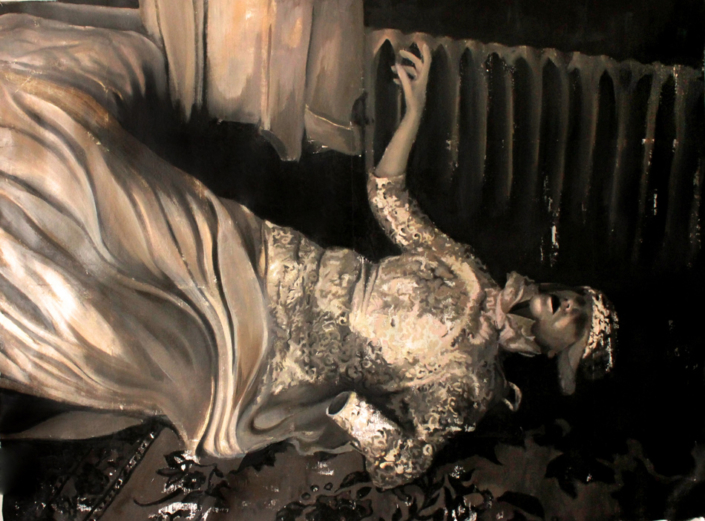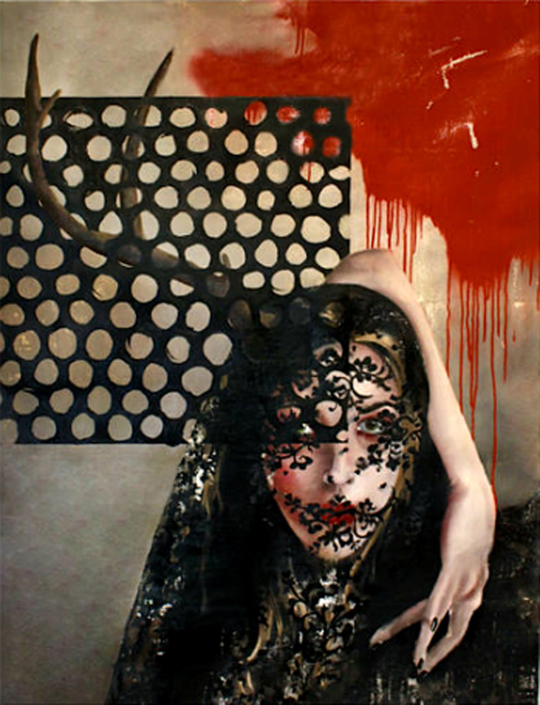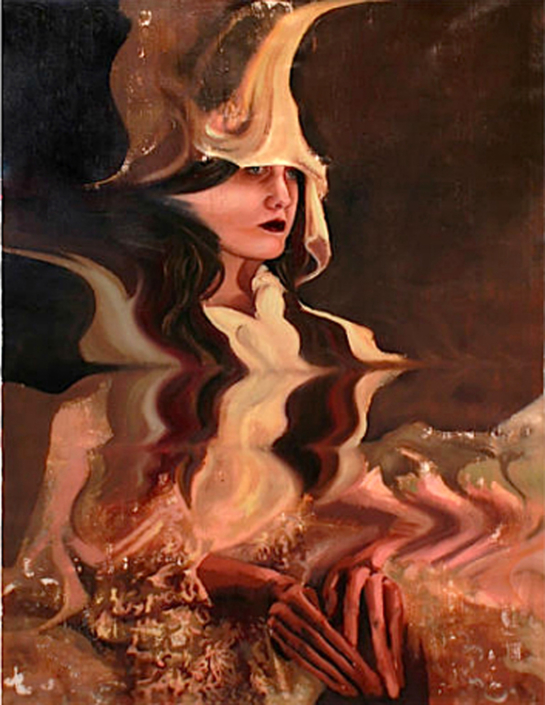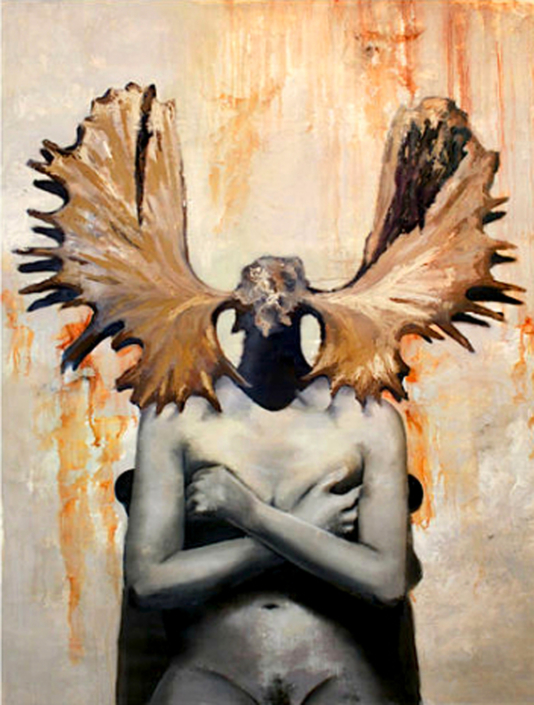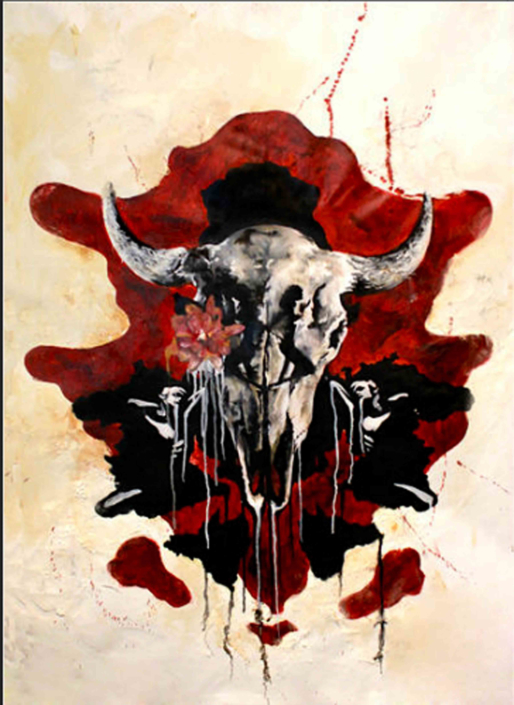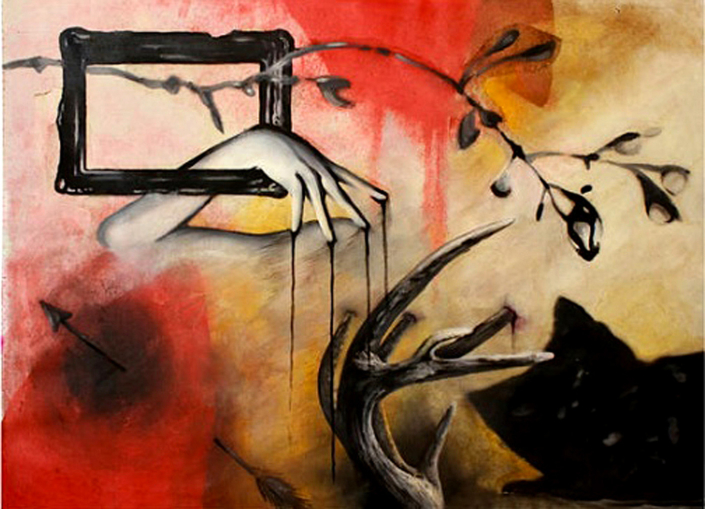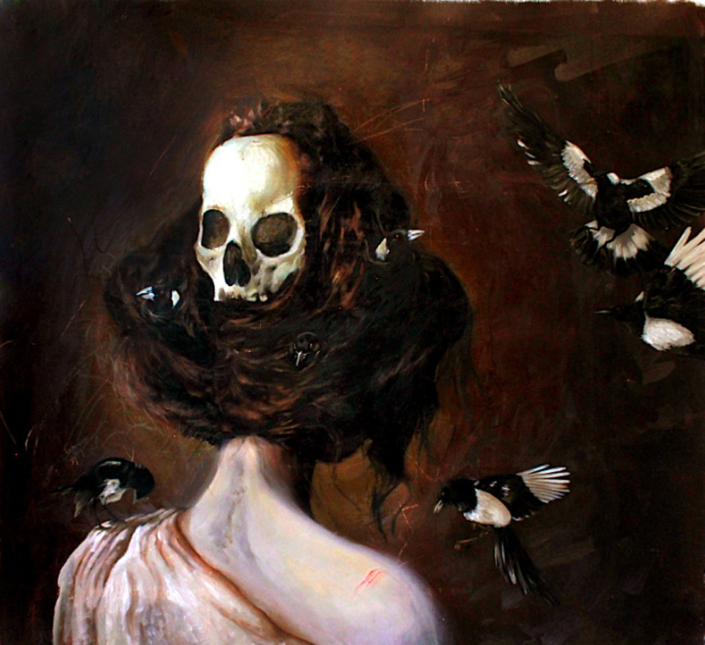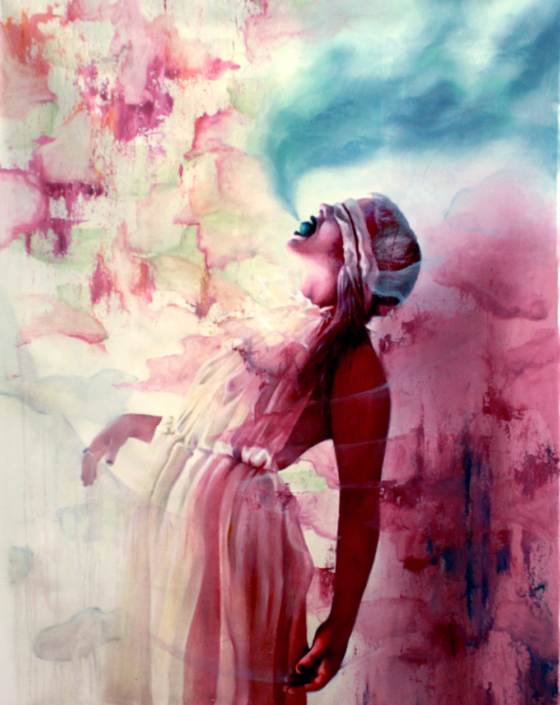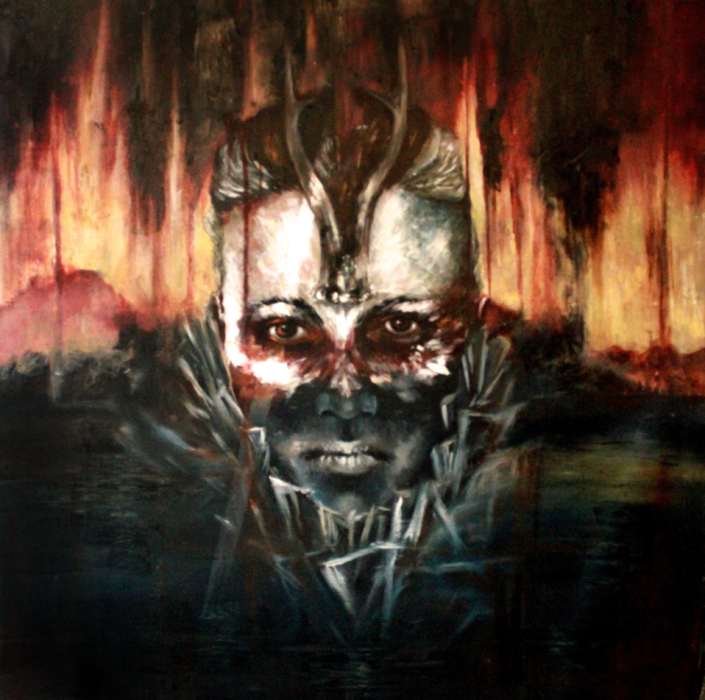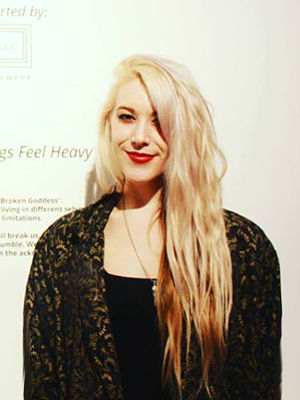Spotlight: Say It Like You Mean It
Artist Statement
I am interested in different forms of communication (verbal, written, body language, etc). I generally paint the female form in uncomfortable positions and circumstances to see if an idea, emotion, or critique can be communicated using bodies, symbols, and titles. People are gregarious by nature. We are not meant for solitary existence. Our need to affectively communicate with each other is a biological imperative. If we cannot communicate, we cannot relate and bond, and thusly we cannot mate and survive. It is one of our most basic needs. Furthermore, I am interested in what happens when one is not able to communicate affectively, or at all. I find the psychopathology that arises from these conditions to be incredibly fascinating, and an inherent part of being a women in a patriarchal society where we constantly feel silenced, or unheard. The physical, emotional, and mental toll that the inability to communicate can take is unparalleled in the human condition.
Along with my interest in communication, I often use symbolism in my work to further aid in what is meant to be communicated, or confuse the message in an attempt to heighten the fallout. One prevalent image in my work is bones and skulls. The skeletal structure in the basis for which everything is built on, so it is literally a foundation for life. To me, bones can represent a foundational belief system around which we build our lives, or the structures and ideas around which we build our culture or society. Bones and skulls are the structures that shape and define us, but they are hidden deep inside under layers of tissue and skin. Antlers and horns are interesting because they are the visible protrusions of that foundation. They are the parts of the internal structure that cannot be hidden by layers of flesh and fur, the part of ourselves or our culture we cannot hide or cover up.
My style of painting is influenced by traditional European portraiture because of its long standing history with the female form. In this genre, the female form, which was traditionally painted by male artists, to be viewed by men, was depicted as a passive object, akin to a decorative vase in a still life. It was something to be looked at and enjoyed, so that the male viewer could feel his own masculinity. It wasn’t until the female gaze was turned outward to her audience in a stance of opposition to her own passivity that the female form started to regain power in and of itself. I am honestly tired of seeing representations of the female form created by men. They often paint us as they see us: sexy, naked, simplified and vulnerable. Manic manifestations in need of their ‘saving’. They almost never paint us as we see ourselves: powerful, brave, complex, and fierce. In my work, by imbuing the female body with the purpose of communicating a feeling or an idea, it is not passive, it is not an object: it is an agent of expression.

